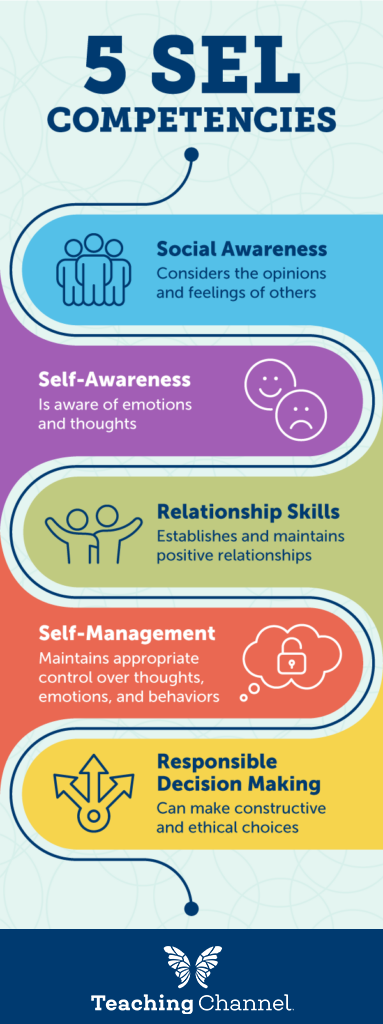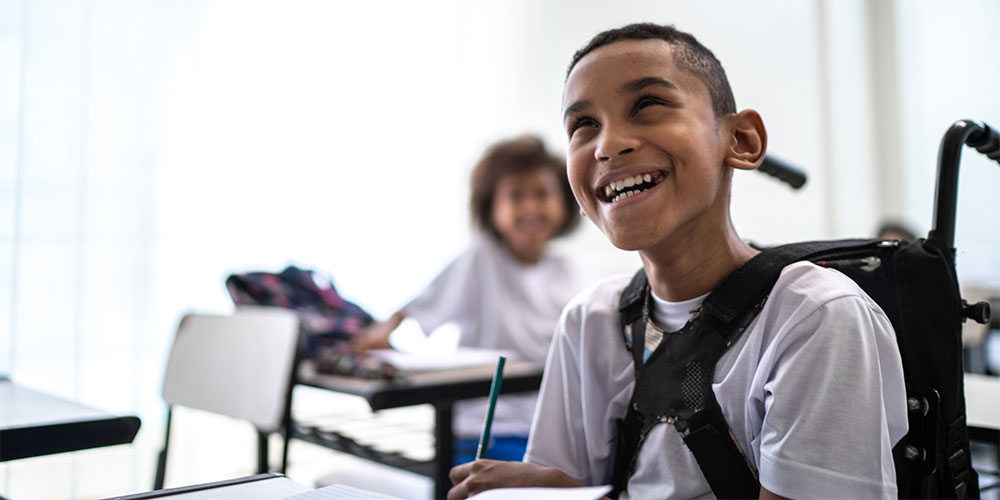As educators and administrators, we have a responsibility to guide students not just through math and history, but also through social and emotional learning.
For many students, school is their first time being among a large number of their peers, across a wide range of socioeconomic differences. Thriving in that experience and becoming in tune with their social and emotional wants and needs is all part of social and emotional learning.
Defining SEL Domains
Social and emotional learning is a multifaceted, nuanced subject.
We live in a diverse world. Rarely will you find two students with the exact same experiences or backgrounds. For students, forming friendships with others whose experiences are different from their own can be exciting and beneficial, but it requires a good deal of understanding and sensitivity.
SEL involves teaching students to be more aware of themselves and their emotions, on multiple levels, and to have empathy and understanding for their peers’ emotions. A research team at the Harvard Graduate School of Education, led by psychologist Stephanie Jones, sought to break down the complex topic of SEL into three different domains, which Jones called “buckets.” Each of these domains plays a role in helping students better navigate social situations.
These include:
- Cognitive regulation: This is more commonly known as “executive function.” It relates mostly to memory, attentiveness, impulse control, and “cognitive flexibility,” or the ability to think about multiple concepts at once or switch between them.
- Emotion: This relates to both recognizing and expressing emotions appropriately. Emotional skills include learning how to acknowledge and express your own emotions as well as how to recognize and have empathy for others’ emotions.
- Interpersonal: The final domain is all about combining your cognitive regulation and emotional skills and bringing them into the way you treat those around you. This is about learning prosocial behavior, picking up on social cues, and learning how to navigate and resolve conflict.
Between these three domains, you’ll be able to address all of SEL and teach it in a way that’s not daunting to students. But SEL can be broken down even further, into five different competencies.
Understanding the 5 SEL Competencies
To learn social and emotional skills, students must become competent at understanding themselves, the people around them, and the social situations in which they exist. Though that might sound simple on paper, these skills can be quite difficult to master, especially for younger students. To make teaching SEL skills easier, it’s helpful to think about them as five key competencies, beginning with the self, as displayed in the infographic below:

- Self-awareness: To start, be more aware of your own emotions and thoughts. Why are you feeling those emotions? How might you be expressing them, or how might they be impacting your behavior? How do they affect those around you?
- Self-management: Once you’re aware of those emotions and thoughts, you can manage your behavior. There’s no shame in feeling emotions — in fact, it’s healthy. But it’s important to be careful with how those emotions affect others. Self-management involves taking responsibility for your thoughts, feelings, and behaviors. It also means setting goals for managing yourself.
- Social awareness: It’s not enough to be aware of your own thoughts and feelings. It’s also important to be in tune with the thoughts and feelings of others. Social awareness is all about considering the feelings of others and trying to look at the world from their perspective. Other people might come from vastly different backgrounds than you. How does that impact their thoughts and feelings? Try to treat their actions with empathy and understanding, mindful of what they might be feeling.
- Relationship skills: With self-management and empathy, you can start to build and maintain healthy relationships with people from a diverse range of backgrounds. Relationship skills include learning how to communicate your feelings and needs, as well as listening to others. For a positive relationship to thrive, you have to know how to resolve conflict peacefully and understand when to ask for or offer help.
- Making responsible decisions: Finally, there’s ethics. How does all this social and emotional learning impact the choices you make? Consider the consequences of each choice — how it affects you and how it affects others.
Social and emotional learning should be a part of every aspect of school — whether it’s the classroom, gym, counselor’s office, or lunch. Through the examples and guidance of educators and school leaders, students of all ages can begin learning these vital skills that will help them build their mental health and rich relationships throughout their lives.






